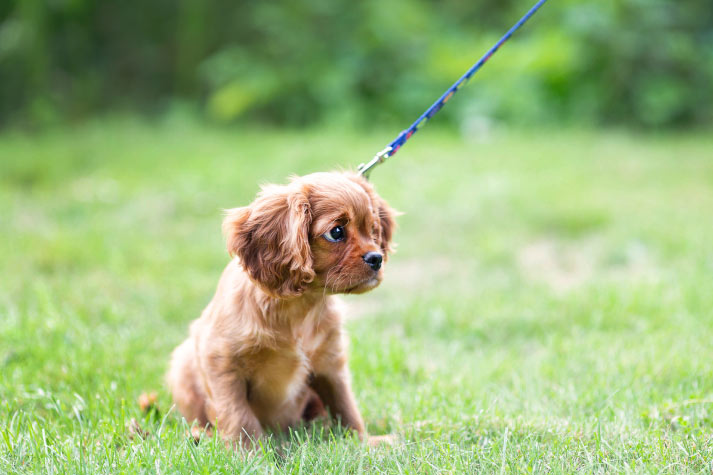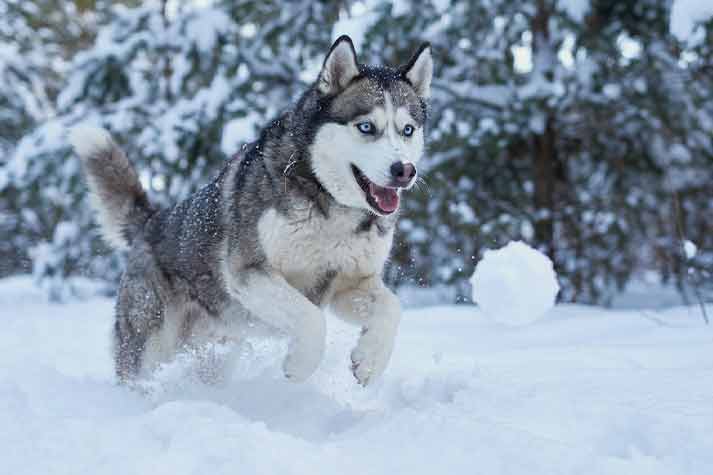
27 Aug
How to Teach a Puppy to Walk on a Leash
Walking a dog may seem simple, but for many new owners, the first experience of leash training for puppies reveals just how challenging it can be. Puppies are naturally curious, excitable, and often lack the impulse control required to follow calmly on a lead. Without guidance, walks can quickly turn into a tug-of-war between pet and owner. Teaching proper leash behavior is not only about convenience; it is about safety, long-term well-being, and building the foundations of responsible ownership.
Why Early Leash Training for Puppies Matter
Introducing structured leash habits during puppyhood provides long-lasting benefits. Dogs that learn good walking manners early are less likely to develop behavioral issues such as pulling, lunging, or anxiety during outdoor activities. Consider how essential this is when thinking about pet travel. Whether navigating a busy city street or strolling through a quiet park, a calm, leash-trained dog ensures that both animal and handler remain safe.
Moreover, leash training establishes boundaries and communication. Puppies quickly learn that the leash is not a restriction but a guide. This distinction reduces frustration, builds trust, and ultimately makes daily exercise more enjoyable.
Preparing for Leash Training
Before considering how to train your dog for walks, preparation is key. The right equipment sets the stage for success. A well-fitted harness often provides better control and reduces strain on a puppy’s neck compared to a collar. Lightweight leashes, typically four to six feet in length, are ideal for training because they allow enough space for exploration without encouraging pulling.
The environment also plays a critical role. Starting indoors or in a quiet backyard helps minimize distractions. Once the puppy understands the basics, training can gradually extend to more stimulating settings. Progression should feel natural, not forced, to avoid overwhelming the young dog.
Step-by-Step Guide to Teaching Leash Walking
- Introduce the Leash Gradually - Allow the puppy to sniff and explore the leash before attaching it. Letting them drag it gently around the house for short periods helps normalize the sensation.
- Use Positive Reinforcement - Reward calm behavior with treats or verbal praise. If the puppy sits quietly while the leash is clipped on, the reinforcement builds an association between the leash and good experiences.
- Teach the “Follow” Command - Begin walking a few steps at a time, rewarding the puppy for staying near your side. Consistency is vital; each time they follow without pulling, they should receive recognition.
- Discourage Pulling Early - Puppies often pull forward when excited. The best practice is to stop moving until the leash slackens. Moving only when tension eases teaches the puppy that pulling does not achieve results.
- Gradually Increase Duration - Extend walking time as the puppy becomes more confident. Short, frequent training sessions are more effective than one long, exhausting walk.
This structured approach avoids frustration and builds a foundation of trust and cooperation.
Common Leash Training Mistakes to Avoid
Even with good intentions, owners sometimes make errors that set back progress. Recognizing these leash training mistakes to avoid is just as important as learning correct methods.
- Inconsistency: Switching between allowing pulling one day and correcting it the next confuses the puppy. Clear, consistent rules build faster understanding.
- Over-reliance on Punishment: Harsh corrections often create fear rather than learning. Positive reinforcement fosters cooperation and confidence.
- Skipping Basic Commands: Without cues such as “sit” or “stay,” leash training becomes far more difficult. Foundation commands should precede advanced work.
- Rushing Progress: Exposing puppies too quickly to busy environments increases stress. Gradual exposure is more effective.
Addressing these mistakes early helps ensure long-term success and avoids reinforcing bad habits.
Dog Walking Tips Before Pet Travel
Daily walks form the cornerstone of canine exercise, but preparation takes on heightened importance before embarking on pet travel. Puppies unaccustomed to walking calmly may find airports, train stations, or even roadside rest stops overwhelming.
Here are practical dog walking tips before pet travel:
- Practice in Varied Environments: Gradually introduce the puppy to different settings, quiet streets, busier sidewalks, or park trails. This exposure builds confidence.
- Rehearse Short Trips: Before a long journey, practice leash walking during brief car rides followed by short walks in unfamiliar locations. This simulates the experience of travel stops.
- Prioritize Safety: Use a harness with secure clips, particularly during travel, to reduce escape risks.
- Maintain Routine: Puppies thrive on consistency. Keeping walk times regular, even while traveling, reduces anxiety.
These strategies ensure that leash skills extend beyond the neighborhood and adapt to the unpredictable environments that come with travel.
The Broader Role of Leash Training in Pet Care
Leash walking is not merely a matter of exercise; it is an integral aspect of overall pet care. Regular, controlled walks improve cardiovascular health, manage weight, and provide mental stimulation. They also offer structured opportunities for socialization, which is crucial in preventing behavioral problems later in life.
From a practical standpoint, leash training influences how easily a dog integrates into family routines. Whether the household enjoys hiking, city strolls, or long-distance journeys, a well-trained dog enhances rather than complicates the experience. Pet travel becomes less stressful, and day-to-day walks transform from chores into bonding opportunities.
An Analytical Look at Training Outcomes
Research into canine behavior consistently highlights the benefits of positive reinforcement. According to the American Veterinary Society of Animal Behavior, training methods that focus on rewards rather than punishment not only improve compliance but also strengthen the human-animal bond. Applied to leash training, this means puppies learn faster and with less stress when rewarded for desired actions.
Conversely, studies reveal that aversive techniques increase anxiety and may result in avoidance behaviors. In the context of leash training, this might manifest as a puppy resisting walks altogether. The evidence underscores why humane, consistent methods remain the most effective approach.
Long-Term Perspective
Leash training should not be seen as a short-term hurdle but as an investment in years of safe, enjoyable outings. Puppies trained effectively in their formative months grow into adult dogs that are easier to handle, safer in public, and more adaptable to travel. This reduces stress not only for the animal but also for owners who wish to include their dogs in a wide range of activities.
Ultimately, the question is not just how to train your dog for walks, but how to prepare for a lifetime of shared experiences. A leash-trained dog enjoys freedom within structure, exploring the world while remaining under safe guidance.
Conclusion
Teaching a puppy to walk calmly on a leash is both a challenge and a necessity. The process demands patience, consistency, and awareness of common pitfalls. When approached thoughtfully, it becomes more than a training exercise, it is a cornerstone of responsible ownership, a safeguard for pet travel, and a vital element of overall pet care.
By understanding the nuances of leash training for puppies, avoiding preventable mistakes, and applying proven methods, owners can ensure their dogs develop into confident, well-mannered companions. The investment made in early training pays dividends for years, turning every walk into an experience that strengthens the bond between dog and human while ensuring safety, comfort, and lasting enjoyment.






AUTHOR’S BIO
Carry My Pet
Passionate pet enthusiasts and globetrotters, dedicated to easing furry friends' journeys worldwide. Penning tales of compassion at CarryMyPet, where every relocation is a tail-wagging adventure.